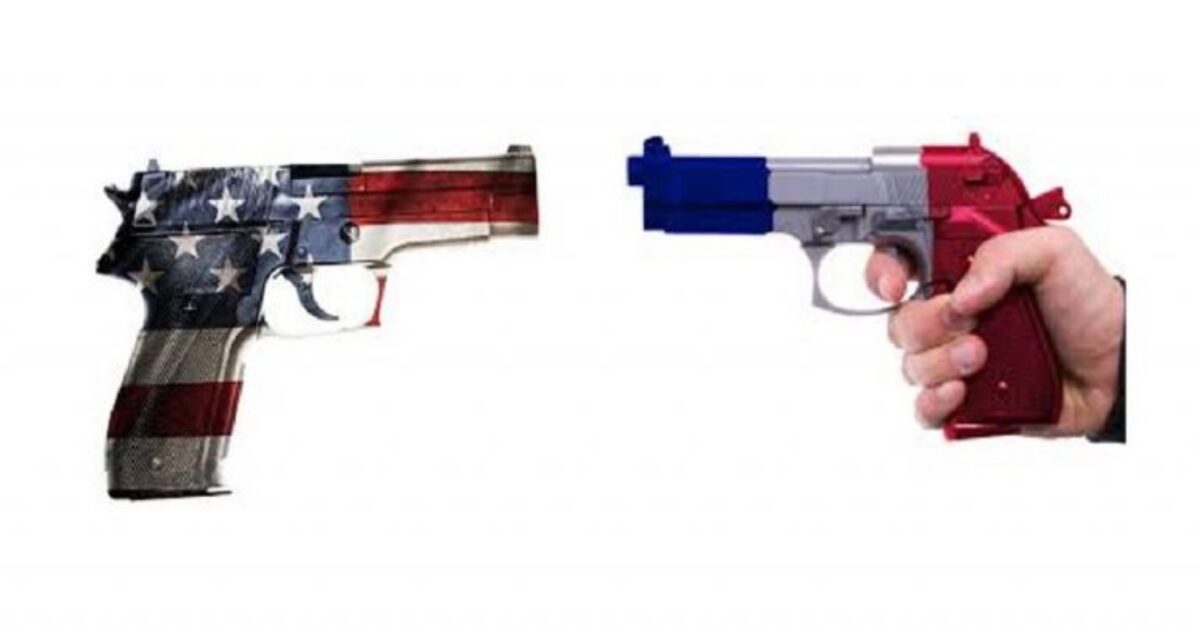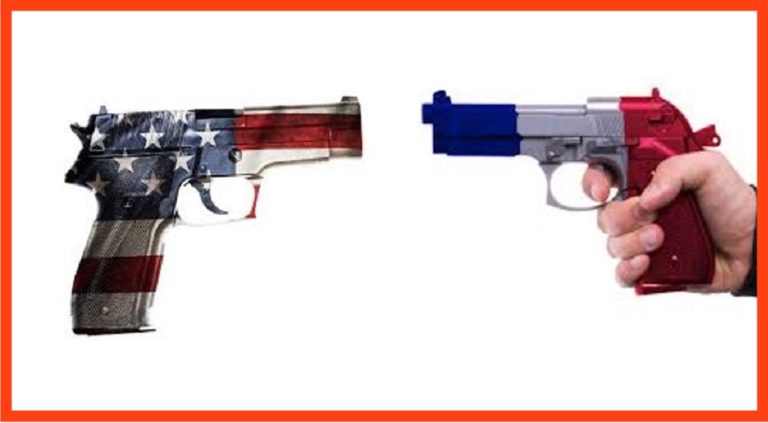After the tragedy in Uvalde, Texas, as is often the case after shootings in the United States, some of the American press has made the obvious connection between the large numbers of weapons in circulation around the country and the shocking American pattern of repeated mass shootings. However, a comparison of French and American statistics shows that, although there seems to be a link, the situation is more complex than it appears at first sight.
An American is 30 times more likely to die from a gunshot than a French person
The first difficulty on the road to a Franco-American comparison is that France does not officially distinguish between homicides committed with firearms and those committed by other means. Nevertheless, according to various studies, collected, in particular, by GunPolicy.org, the University of Sydney’s specialized site, about a quarter to a third of French homicides are committed with a firearm (other means are knives, blows and just general “violence”). Whereas firearms make up 80% of those homicides committed in the United States. Thus, with a hundred homicides by firearm in France, the rate is about 0.15 per 100,000, whereas it is about 4.5 per 100,000 in the United States. That is thirty times more.
6 times more guns in the U.S. than France
At first glance, the relationship between the number of firearms in circulation and the number of deaths is striking. Several studies confirm that there is a direct correlation between the number of guns in circulation and the number of deaths (homicides and suicides) in the United States.
A direct comparison between France and the United States seems to support this view. Year in and year out, the number of firearm deaths (including homicides, suicides and accidents) is around 2.5 people per 100,000 inhabitants in France each year. In the United States, this rate is more than 12 per 100,000 inhabitants. Therefore, there are about 5 times more people who die each year from firearms in the United States than in France.
This is about the same ratio as in the case of private firearms ownership. There are between 15 and 20 firearms in circulation (privately owned) in France for every 100 inhabitants, compared to about 120 guns for every 100 inhabitants in the United States according to GunPolicy.org.
Decline in homicides on both sides of the Atlantic
However, when we look at the statistics more closely, this 6 to 1 symmetry breaks down: First of all, over the last 40 years, the number of homicides (by firearms or not) has decreased in comparable proportions in both countries. In France, it went from 3 to 1.3 per 100,000 inhabitants between 1993 and 2017. In the United States, it has gone from more than 10 homicides per 100,000 inhabitants in the early 1980s to just over 5 in recent years. In short, in both countries, the homicide rate has dropped by about half. Meanwhile, in the United States, the number of purchased firearms was soaring; in France the number of purchased firearms was falling.
The causality between the number of firearms and mortality is therefore not obvious. Suicide is the best example. The suicide rate in France is much higher than in many other European countries (13 to 15 per 100,000) whereas the firearm suicide rate is considerably higher in the United States (about 7 per 100,000) than in France (1.5 per 100,000), according to available statistics from GunPolicy.org. Simply put, the French have less access to firearms than Americans, but they find other ways to end their lives.
But why then, in the case of mass shootings, do we so easily jump to the conclusion that the American exception in this area is necessarily linked to the abundance of weapons? In Europe, the rate of firearm circulation varies greatly from one country to another (there are five times as many in France as in the United Kingdom) without any one country standing out with an increase in its number of shootings. If the French have more firearms than the U.K., but don’t necessarily commit more mass shootings, then that logic falls apart.
Indeed, in the United States, mass shootings seem to follow a different logic: They have been constantly increasing since the 1970s. Psychological disorders are often put forward as the cause, but no direct link can be established. If there is an increase in these disorders, it doesn’t follow, it seems, the same curve in the incredible explosion of mass shootings. There must be some other explanation.
But what is as true today as it was not quite two weeks ago after the shooting in Buffalo, is that the possible reasons that the United States leads the world with mass shootings are as difficult to identify as the horror of these tragedies is to stomach. The senseless tragedy makes any attempt to discern the killer’s motive futile. But one thing is certain: There is an American exception. And, for once, the statistics do not help us understand it.






